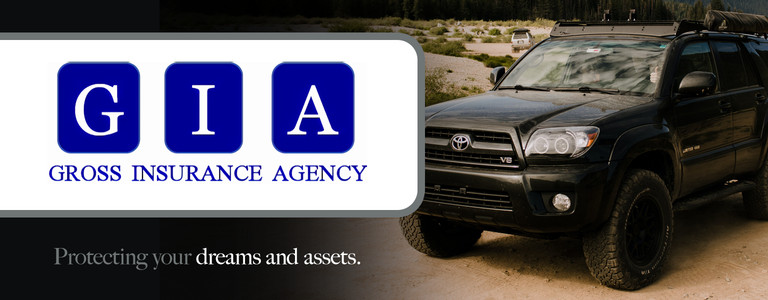 When it comes to vehicle safety, your tires are one of the most critical components—yet they’re often overlooked until something goes wrong. According to the National Highway Traffic Safety Administration (NHTSA), faulty tires are responsible for over 11,000 accidents and 200 fatalities annually in the United States alone. This is why regular tire maintenance is essential—not only for optimal vehicle performance but also for ensuring your safety and that of your passengers.
When it comes to vehicle safety, your tires are one of the most critical components—yet they’re often overlooked until something goes wrong. According to the National Highway Traffic Safety Administration (NHTSA), faulty tires are responsible for over 11,000 accidents and 200 fatalities annually in the United States alone. This is why regular tire maintenance is essential—not only for optimal vehicle performance but also for ensuring your safety and that of your passengers.
Your tires are the only point of contact between your vehicle and the road, so keeping them in good condition is crucial. Here are some essential tire safety tips to help you maintain your tires, reduce the risk of accidents, and keep your car running smoothly.
1. Do a Visual Inspection Regularly
One of the simplest yet most important tire maintenance steps is conducting a visual inspection. Your tires should be checked regularly for signs of wear and damage. Look for any obvious issues such as tears, blisters, or bulges in the sidewalls. These can be caused by overheating, underinflation, or even road hazards like potholes. A bulging sidewall or blister can lead to a tire blowout, which may result in serious accidents.
Additionally, inspect your tires for foreign objects like stones, nails, screws, or other debris that can cause damage or punctures. Any visible damage should be addressed immediately by a professional. Don’t forget to check the tread for even wear—uneven wear can be a sign of alignment problems, which may affect your vehicle’s handling and safety.
2. Choose the Right Tires for Your Vehicle
When it comes to tires, one size does not fit all. It’s essential to choose tires that are the right fit for your vehicle and the driving conditions you regularly encounter. Tires play a significant role in how well your car handles different road conditions, such as wet, dry, or snowy weather, and the right tires can also improve fuel efficiency.
When shopping for tires, be sure to consult your vehicle’s owner’s manual or the sticker inside the driver’s side door frame to ensure you’re purchasing the correct size. Tires come with a variety of specifications, including tread patterns, load capacity, and performance features, which vary depending on your vehicle’s requirements. For example, if you live in a region that experiences harsh winters, all-season or winter tires with deeper treads and better traction are advisable.
A good set of tires, if properly maintained, can last between 60,000 and 80,000 miles. However, purchasing tires from reputable brands and reading customer reviews can help you find the safest, most durable, and affordable options for your vehicle. Don’t forget to compare prices, but remember that cheaper tires may not always provide the best performance or safety.
3. Check Tire Pressure Monthly
Maintaining proper tire pressure is one of the easiest and most effective ways to ensure the safety and longevity of your tires. Underinflated tires are more prone to wear, overheating, and even blowouts, while overinflated tires can result in a rough ride and increased wear on the tread.
You should check the tire pressure of all four tires at least once a month. Use a tire pressure gauge to measure the air pressure and compare it to the recommended levels outlined in your vehicle’s owner’s manual, on the label inside the driver’s side door frame, or on the sidewall of the tire itself. The proper pressure will help optimize fuel efficiency, improve handling, and extend the life of your tires.
If you find that your tires are consistently underinflated, there may be an issue with the tire itself, or you could have a slow leak. In this case, it’s a good idea to have your tires professionally inspected.
4. Check Tire Tread Depth
Your tires’ tread plays a critical role in gripping the road, especially in wet or slippery conditions. Over time, as the tread wears down, your tires lose traction, which can increase the risk of accidents. Fortunately, checking your tire tread depth is an easy and inexpensive task.
A quick and simple way to check your tire tread depth is to use a penny. Place the penny into the tread groove with Lincoln’s head facing down. If the top of Lincoln’s head is visible, this means your tire tread is worn to 2/32 of an inch or less, and it’s time for a tire replacement. Alternatively, you can use a quarter to perform the same test, or purchase a tread depth gauge from any auto parts store for as little as $3 to $8.
Tires with inadequate tread depth should be replaced immediately to ensure safe driving conditions, especially in adverse weather like rain, snow, or ice.
5. Get Your Tires Inspected Frequently
Regular tire inspections by a professional can help detect potential issues early and prevent more serious problems down the road. It’s recommended to have your tires inspected at least once a year, especially if you notice any unusual symptoms, such as a vibration while driving or poor handling. During a tire inspection, a technician can check for hidden damage, such as internal defects or weak spots, which may not be immediately visible.
Frequent inspections are particularly important if you’re planning a long road trip or if you live in an area with extreme weather conditions. Early detection of issues like underinflation, tread wear, or sidewall damage can prevent a dangerous tire blowout, flat tire, or other tire-related accidents.
6. Maintain Proper Alignment and Balancing
In addition to tire inspections, it’s crucial to maintain proper wheel alignment and balancing. Misaligned wheels can cause uneven tire wear, which compromises both safety and performance. If your vehicle pulls to one side or you notice that your steering wheel vibrates at higher speeds, these could be signs that your alignment needs adjustment. A mechanic can perform an alignment check and make necessary adjustments.
Wheel balancing ensures that your tires wear evenly and maintain optimal performance. Unbalanced tires can result in vibrations and premature wear, which could lead to a loss of control while driving. Both alignment and balancing should be part of your regular tire maintenance routine to ensure smooth and safe driving.
Tires are one of the most important safety features of your vehicle. Regular tire inspections, proper tire selection, maintaining correct pressure, and monitoring tread depth are all essential practices that can help prevent accidents and extend the life of your tires. By following these tire safety tips, you’ll reduce the likelihood of a blowout, flat tire, or other tire-related issues, keeping you and your family safer on the road. Keep your tires in good condition, and they will take care of you when you need them the most.







